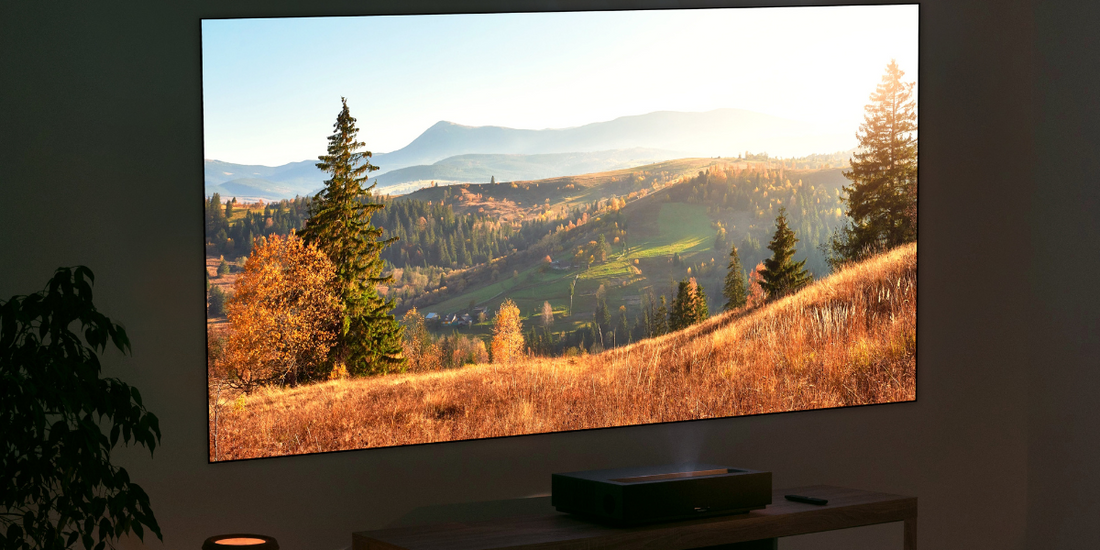DLP vs LCD, Which Is Better?

If you’re searching the market for a projector for your home theater, you may have noticed that there are DLP projectors and LCD projectors. If at any point you asked yourself what the difference between these two technologies is, and which one will better suit your needs, we’ve provided a detailed answer that’ll help you make your decision.
What Is a DLP Projector?
Digital Light Processing (DLP) is an image display technology that uses a series of tilting mirrors to project precise image quality and excellent color reproduction. It was developed by Texas Instruments, and it is considered to be a revolutionary way of displaying and projecting images and videos.
How does a DLP Projector Work?
A DLP projector combines three key elements to display images. The DLP chip is made up of thousands of tiny mirrors that tilt back and forth, a lamp that produces the light, and an RGB color wheel that spins rapidly between the lamp and the DLP chip to create alternating displays of color. Each tiny mirror represents a pixel, and an image is produced when light from the lamp passes through red, green, or blue filters and reflects on the mirrors which tilt to adjust the intensity of the color displayed by each pixel.
What Is an LCD Projector?
LCD projectors use three Liquid Crystal Display (LDC) panels that transmit light instead of reflecting it. The LDC glass panels are red, green, and blue with each one containing thousands of liquid crystals that open and close to permit or restrict light from passing through.
How does an LCD Projector Work
An image is displayed depending on how much light the liquid crystals, also known as dichroic filters, are permitted through. Each filter acts as a pixel with light and color intensity determined by how widely open the filter is.
The Difference Between LCD and 3LCD
According to Projector Central, there is no technical difference between LCD and 3LCD. 3LCD is a brand name adopted by manufacturers for marketing purposes, and both terms can be used interchangeably.
The Pros and Cons of DLP and LCD Projectors
Both technologies offer great advantages to serve different needs, so it’s crucial to identify what you will be using your projector for to understand how one is better than the other.
Pros of a DLP Projector
Cons of a DLP Projector
Pros of an LCD Projector
Cons of an LCD Projector
Should You Buy an LCD or DLP Projector?
An LCD projector is better suited for daytime use outdoors because of the high brightness levels, however, outdoor use exposes the projector to dust particles which can affect its quality of life.
A DLP projector is excellent to use in a home theater, on road trips, and on camping outings. It displays stunning contrast levels and color saturation, making it the ideal choice for dimly lit areas.
Create the Ultimate Home Theater
Although both technologies offer a host of different advantages, a DLP projector is suited for more uses than an LCD projector. If you like the idea of being able to switch up your viewing experience at leisure, then consider taking a closer look at your DLP projector options.
Formovie THEATER
The Formovie THEATER is a DLP projector which offers an incredible 4K UHD display using ALDP as its light source. It has a 3000:1 FOFO contrast ratio for excellent displays of dark tones, and Motion Estimation Motion Compensation (MEMC) for a smooth and clear display of fast-moving objects.



